Main menu
You are here
Replacing a horn on a smoothing plane
Wed, 05/12/2007 - 00:00 — Pekka Huhta
The horn on a "continental style" or german handplane is often missing.
Main reason is the force used to plane, but reading from the cracks on
several planes, they also suffer from the same "dropping syndrome" as
the totes on Stanleys.
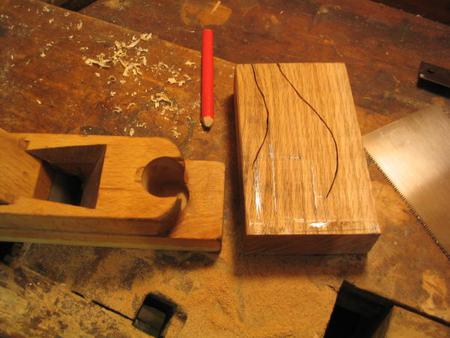
Replacing the horn can be as easy as this:
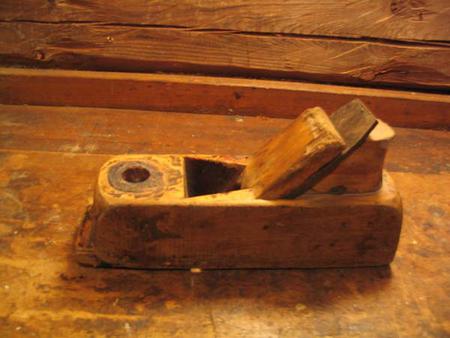
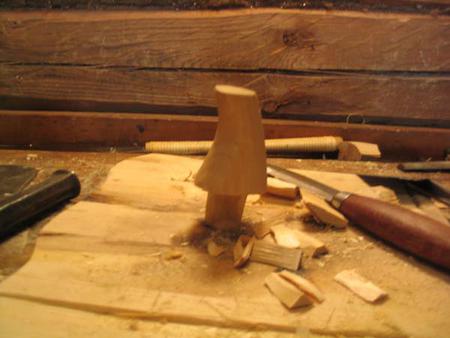
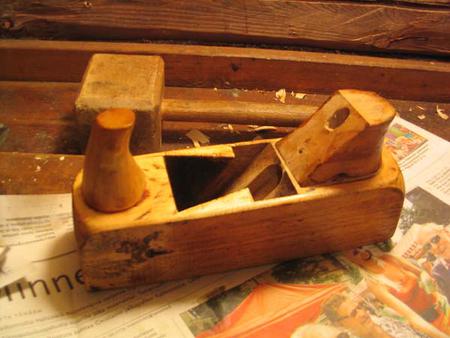
Or it may require a bit more effort, as the horn styles and forms vary quite a bit. I have even seen a horn made from a real cowhorn, which seemed quite impractical. But ah, so fancy.
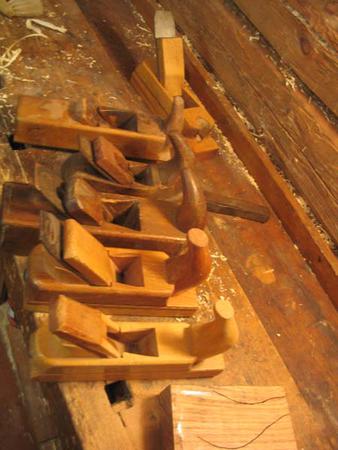
The horns really vary quite much, especially in hand-made older wooden planes. The newer factory-made planes tend to be "semi-ergonomically" formed, at least to the right-handers. This is somewhat annoying, as it's pretty difficult to use them left-handed. Although I am right-handed I use my planes a great deal on the left side as well, so I try to make all of my tools ambidextrous.
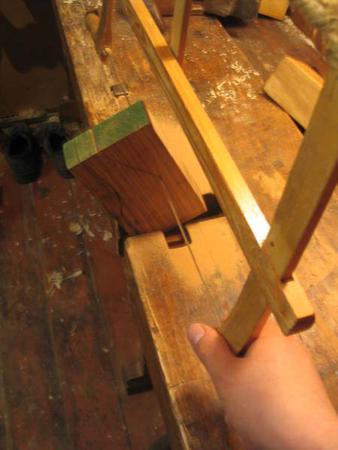
It all started by sawing the blank from any suitable piece of scrapwood, oak this time. If you use just a piece of firewood (like I do for many tasks), plane one side of it straight so you have some sort of a reference surface. Also note that the blank should be a bit bigger so that you have something to grip when forming the wood.
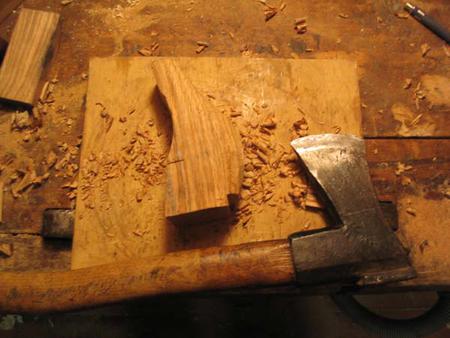
The basic form is easiest to carve with an axe, it takes just minutes. I have a small "workshop axe" for this kind of work. It is light enough to be used just on top of the workbench with just a suitable piece of plywood gripped to the vise for protection. If you like you can go pretty far with the axe so there is very little rasping to do.
The axe isn't that old, from the '40's or so. If you like to try one, the Swedish Hultafors axes are pretty decent.
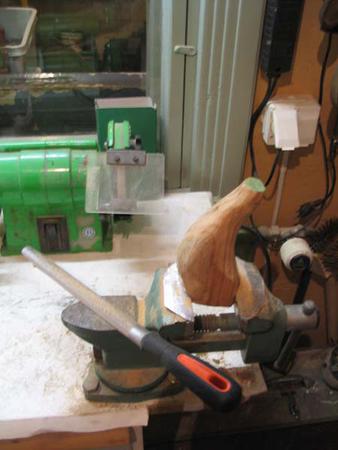
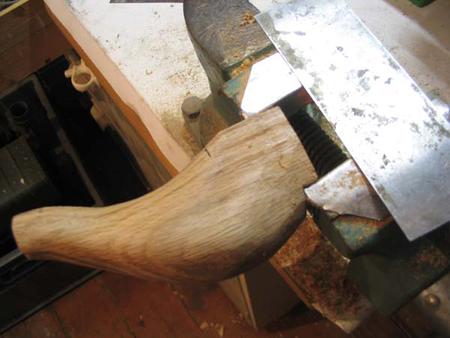
All it takes to finish the form is a bit of rasping and finishing the surface with a scraper.
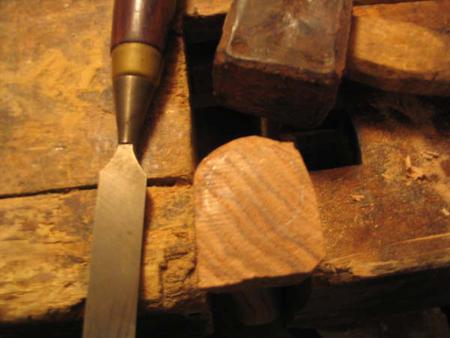
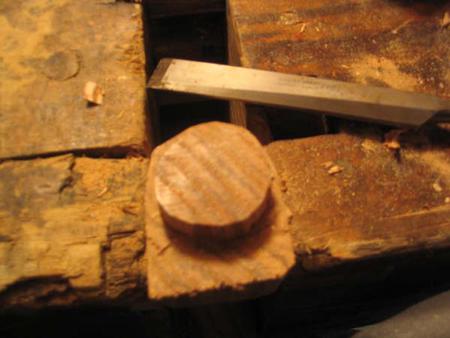
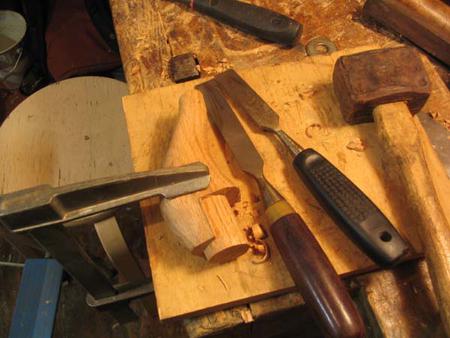
Then it's time for the tenon for fixing the horn to the plane. On these modern planes you usually have to modify the mortice on the plane itself as well. The joint has usually been designed keeping in mind that the parts are just machined, so copying that joint to hand tools may be a bit frustrating and quite useless. Easier to modify the frame as well.
And remember, epoxy is cheating!
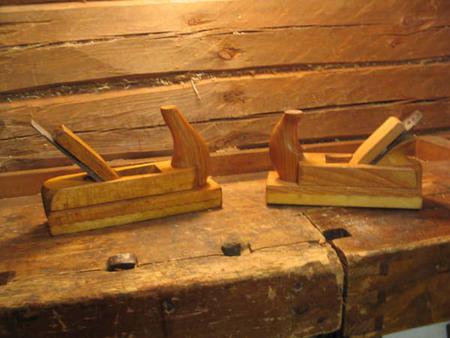
The finished one on the left, as you guessed.
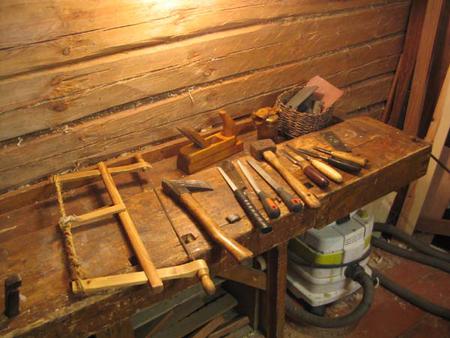
...and the tools used.

Replacing the horn can be as easy as this:



Or it may require a bit more effort, as the horn styles and forms vary quite a bit. I have even seen a horn made from a real cowhorn, which seemed quite impractical. But ah, so fancy.

The horns really vary quite much, especially in hand-made older wooden planes. The newer factory-made planes tend to be "semi-ergonomically" formed, at least to the right-handers. This is somewhat annoying, as it's pretty difficult to use them left-handed. Although I am right-handed I use my planes a great deal on the left side as well, so I try to make all of my tools ambidextrous.

It all started by sawing the blank from any suitable piece of scrapwood, oak this time. If you use just a piece of firewood (like I do for many tasks), plane one side of it straight so you have some sort of a reference surface. Also note that the blank should be a bit bigger so that you have something to grip when forming the wood.

The basic form is easiest to carve with an axe, it takes just minutes. I have a small "workshop axe" for this kind of work. It is light enough to be used just on top of the workbench with just a suitable piece of plywood gripped to the vise for protection. If you like you can go pretty far with the axe so there is very little rasping to do.
The axe isn't that old, from the '40's or so. If you like to try one, the Swedish Hultafors axes are pretty decent.


All it takes to finish the form is a bit of rasping and finishing the surface with a scraper.



Then it's time for the tenon for fixing the horn to the plane. On these modern planes you usually have to modify the mortice on the plane itself as well. The joint has usually been designed keeping in mind that the parts are just machined, so copying that joint to hand tools may be a bit frustrating and quite useless. Easier to modify the frame as well.
And remember, epoxy is cheating!

The finished one on the left, as you guessed.

...and the tools used.
